
Auto belays have gained enormous popularity in the last ten years and are now commonplace in many climbing gyms all over the world. Auto belays may seem unusual at first if you are used to climbing with a partner belaying you or if you have no prior climbing experience. Many individuals are initially afraid to trust them as a result.
Climbers of all ages and levels can easily practice without a partner thanks to the extremely safe auto belays. This article will cover all the pertinent details concerning auto belays, including how they operate, safety advice, advantages and disadvantages of using one, and cost.
An auto belay is what?
As a climber moves up the wall, an auto belay device automatically picks up the slack. The tool stops a fall and gently lowers the climber to the ground if the climber accidentally lets go or falls. A climber can top rope the routes below an auto belay, which is often fastened to the top of the wall, without the help of a belayer on the ground.
A locking carabiner, a lengthy lanyard (often made of nylon or Dyneema webbing, but there are also auto belays that employ rope), and an internal belay mechanism make up these devices. Auto belays come in three primary categories: magnetic, friction, and hydraulic. Although the internal mechanisms of the devices operate in various ways, the final result is the same: a secure system that enables climbers to ascend routes alone.
How safe are auto belays?
When utilized properly, auto belays are exceedingly safe nowadays. The equipment must pass stringent safety inspections and routine maintenance, and backup brake mechanisms are included in case of equipment failure. As a result, human error is to blame for the majority of auto belay incidents.
Let a staff member at your gym know if you’ve never used an auto belay before, and they will show you how to operate the machine. Before beginning to climb, always perform a safety check, even if you are comfortable with auto belays.
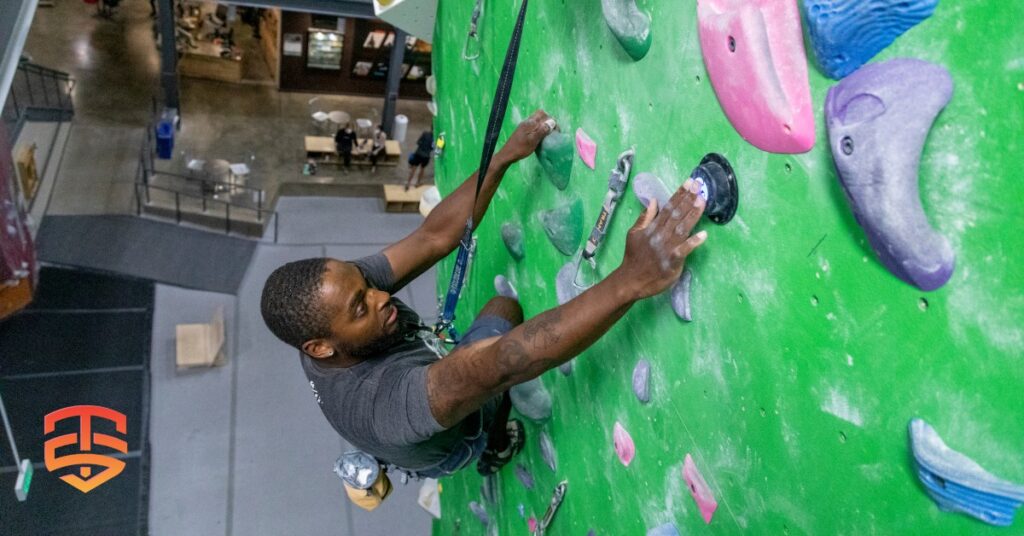
An auto belay safety inspection typically involves the following:
- Make sure your harness is properly attached and fitting.
- Pull down on the webbing or lanyard without releasing the carabiner, then check to see that it retracts properly.
- Attach the automatic-locking carabiner to your harness’s belay loop or another appropriate attachment point. Make sure the gate is locked, that nothing is blocking it, and that it is entirely closed. Throughout this phase, keep your grip on the auto belay tight; otherwise, the lanyard will retract back to the top of the route.
- Verify everything one last time, paying special attention to your harness, carabiner, and attachment point. You could start climbing if everything appears to be in order.
- A little test fall close to the ground is a good idea if you’ve never used an auto belay before to get a feel for it and get confidence in the device. Many people find it less daunting and simpler to release the holds that are close to the ground than those that are farther up the wall.
When you start climbing, pay attention to the webbing or rope’s slack. If it won’t retract, stop climbing right away and ask for help. Never climb above or close to the auto belay device at the top of the route; instead, stop when you get there. Unclip the carabiner from your harness when you’re through completing the route and are secure on the ground. Reattach it to the correct location towards the bottom of the wall.
Please be aware that depending on the auto belay model your gym utilizes, the precise instructions and safety recommendations may change significantly. Always ask the gym staff how to operate a particular equipment before using it.
-
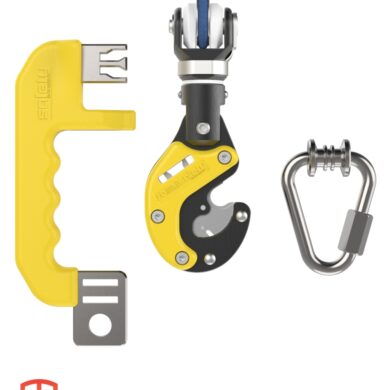 TRUBLUE Self Belay Option€ 570,00 Ex VAT
TRUBLUE Self Belay Option€ 570,00 Ex VAT -
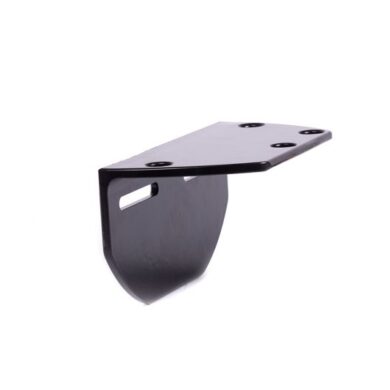 TRU-Mount | Auto Belay mounting system€ 200,00 Ex VAT
TRU-Mount | Auto Belay mounting system€ 200,00 Ex VAT -
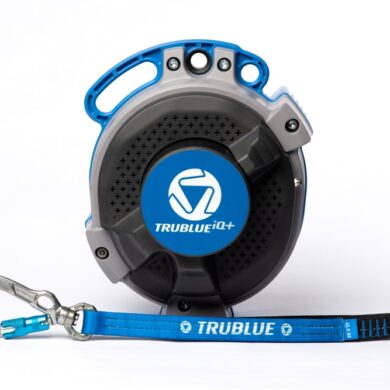 TRUBLUE iQ Auto Belay | 4,5 – 20 meter€ 2.799,00 – € 2.999,00 Ex VAT
TRUBLUE iQ Auto Belay | 4,5 – 20 meter€ 2.799,00 – € 2.999,00 Ex VAT
Advantages and Drawbacks of Using an Auto Belay
Utilizing an auto belay device has benefits and drawbacks, and not all climbers or types of climbing are suitable for them. The benefits, drawbacks, and optimal applications for auto belays are discussed here, along with circumstances in which they are not recommended.
Pros
Excellent for novice climbers: Before learning how to belay, most individuals will attempt to climb the wall. With the use of an auto belay, novice climbers are able to advance their abilities on the wall at their own rate without the need for a partner or instruction on how to belay someone else. The climbers can then start exchanging climbs with a partner after learning to belay using a normal belay device.
Convenient: For climbers who want to climb alone, don’t have a climbing partner, or want to climb on their own schedule without having to coordinate with someone else, auto belays are a great alternative.
Perfect for kids: While some young climbers lack belaying or climbing experience from their parents, others do. Without having to learn how to belay or pay an instructor to belay their child, auto belays make it easier for parents to introduce their children to climbing.
Speed climbing is ideal for fast retraction since many auto belay devices can pick up slack more quickly than a human belayer. This makes them ideal for speed climbing events. A world record holder can climb the wall quicker than the quickest speed belay in the world can roll in at 5 meters per second.
Excellent training aid: Climbers can use an auto belay to do laps on a route for endurance training without requiring a companion to belay them for extended periods of time. They are also an excellent option for climbers who wish to try “mock leading,” which enables them to practice lead climbing fundamentals without taking any additional risks. When practicing clipping in, a climber is tied into a lead rope and secured from above by the auto belay. This is known as “mock leading” (this is also possible using a standard top rope set up with a belayer on the ground).
Promotes social estrangement: COVID regulations have had a big impact on climbing gyms all over the world and have affected how they function. Since a human belayer is not necessary for auto belays, it is simpler to maintain spacing between individuals in the gym.
Cons
less options for routes: Due to the expense, most gyms don’t auto-belay every route. Because of this, using an auto belay at the gym usually limits the number of routes you may take. Climbers who want to test their lead abilities will still need to find a partner because most gyms with auto belays only have them available for top-roping.
You are not permitted to stop mid-route: The auto belay will lower you to the earth and force you to restart the route from the beginning if you fall or weight the rope to take a break. While this may frustrate some climbers, it can also be helpful for learning how to take breaks while on the route, a critical ability that climbers must master when they attempt tougher grades.
It takes some getting used to and trusting an auto belay for experienced climbers who have grown accustomed to normal belaying techniques and their climbing companions. Despite their advantages, some climbers dislike these tools and would rather climb with a partner.

magnetic braking technology, sophisticated design, and high cyclic endurance.
What is the price of an auto belay?
Each auto belay system can cost up to € 3.000,00 and upwards of € 5.000,00. Despite the high initial cost, auto belays are quite advantageous for climbing gyms and their clients. For instance, by utilizing these tools, gyms may organize more occasions like birthday parties, team-building activities, and workshops without adding more employees. For clients, the devices also increase value and flexibility.
Could you self-belay?
It is true that there are various ways to self-belay while rock climbing. Without a partner, auto belays are by far the simplest and safest way to rope climb, and indoor gyms typically forbid self-belaying unless it is done with an auto belay device.
There are methods you can use if you decide you want to do rope climbing alone outside, but these methods are risky and not advised.
Conclusion
There are currently very safe belaying systems called auto belays that may be found at climbing gyms all over the world. Auto belays can be used for a variety of purposes, from assisting novice climbers in developing their skills at their own rate to supporting top speed climbing contests. Although most people find auto belays to be more convenient for climbing inside, they are not suitable for everyone. If an auto belay is right for your climbing demands and style, it is ultimately up to you to determine.
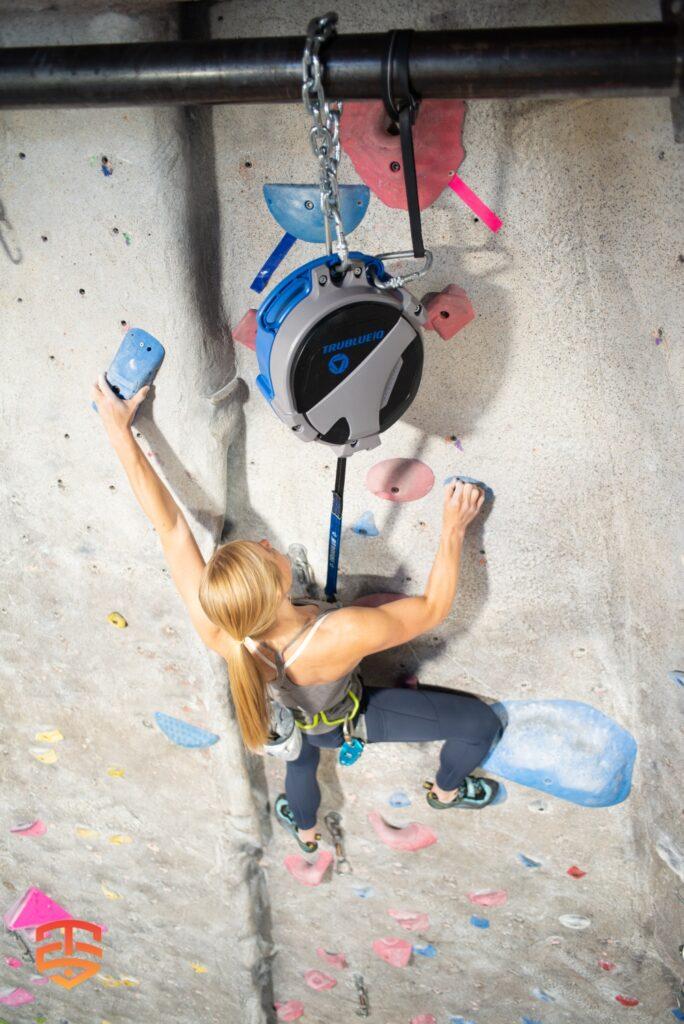
Vertical Auto Belay systems
Grow your climbing community by providing more access to more routes for more climbers.
Auto Belay makes climbing simple and approachable, turning first-time users into return customers. TRUBLUE Auto Belays are engineered to minimize maintenance and are built to last. Our patented magnetic braking system, delivers the smoothest user experience, the highest level of reliability, and dramatically reduces device downtime.
Dive Deeper: Exploring Auto Belay Technology with Expert Insights
Auto belays are transforming the world of indoor climbing, offering convenience and safety for climbers of all levels. But how exactly do they work, and what are the key considerations for using them? To learn more about the intricacies of auto belay technology and gain valuable insights from experts in the field, check out our additional resources below…
- Comparison of Auto Belay’s: what’s new in the TRUBLUE iQ series
- Using Technology to Make Your Climbing Gym Accessible and Inclusive
- A Closer Look at the Auto Belay System
- Next Generation Auto Belay – TRUBLUE iQ
- Every modern climbing gym should have these 5 features
- Everything You Need to Know about Buying Auto Belays
- Increase Revenue and Customer Satisfaction at Family Entertainment Centers
- Catch-and-Hold: What is it and how does it work?
- Leading the Way in profitable and safe climbing
- Why Family Entertainment Centers Trust TRUBLUE Auto Belays
- Creating Value for Customers by Using an Auto Belay
- TRUBLUE iQ+ World’s first catch-and-hold auto belay
- Drive Revenue and Customer Satisfaction with Auto Belays
- 7 Ways Magnetic Braking Is Better Than Friction
- No Belayer Necessary: Understanding Auto belays
- Competitive Advantage of an Auto Belay
- ROI at Climbing Walls and Family Entertainment Centers
- Auto-Belay and hands-free climbing challenges
- Why using Auto Belays Boosts your Business
- The Science of Eddy Current Magnetic Braking
-
 TRUBLUE iQ+ | Catch & Hold Auto Belay€ 4.399,00 – € 4.599,00 Ex VAT
TRUBLUE iQ+ | Catch & Hold Auto Belay€ 4.399,00 – € 4.599,00 Ex VAT -
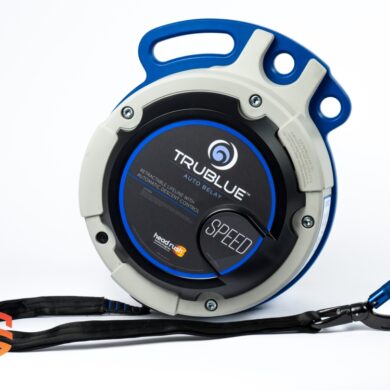 TRUBLUE SPEED Auto Belay | 7,5 – 16 meter€ 2.799,00 – € 2.899,00 Ex VAT
TRUBLUE SPEED Auto Belay | 7,5 – 16 meter€ 2.799,00 – € 2.899,00 Ex VAT -
 TRUBLUE iQ Auto Belay | 4,5 – 20 meter€ 2.799,00 – € 2.999,00 Ex VAT
TRUBLUE iQ Auto Belay | 4,5 – 20 meter€ 2.799,00 – € 2.999,00 Ex VAT







